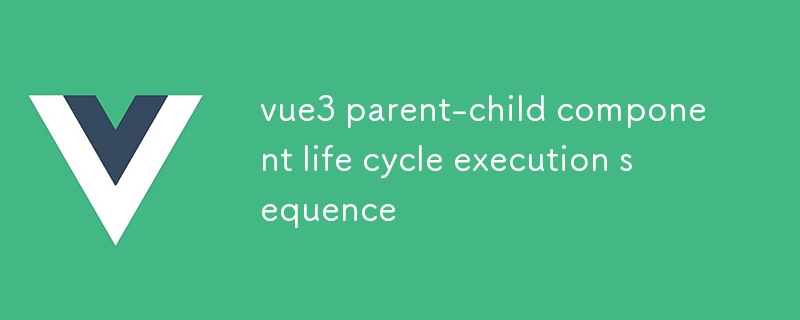
This abstract discusses the lifecycle execution order for parent-child components in Vue.js 3. It mentions that the parent component's lifecycle hooks execute before the child component's lifecycle hooks. The article also provides a solution to ensur

What is the lifecycle execution order of parent-child components in Vue.js 3?
In Vue.js 3, the lifecycle execution order for parent-child components is as follows:
When do child components receive the 'created' lifecycle hook in relation to parent components in Vue.js 3?
Child components receive the 'created' lifecycle hook after the parent component has received it. This is because the parent component's lifecycle hooks execute before the child component's lifecycle hooks.
How can you ensure that the 'mounted' lifecycle hook is executed in a consistent order for both parent and child components in Vue.js 3?
You can ensure that the 'mounted' lifecycle hook is executed in a consistent order for both parent and child components by using the nextTick function. This function schedules a callback to be executed after the current event loop has finished, ensuring that both parent and child components have been mounted before the callback is executed.
For example:
<code>mounted() {
this.$nextTick(() => {
// Code that should be executed after both parent and child components have been mounted
});
}</code>Ce qui précède est le contenu détaillé de. pour plus d'informations, suivez d'autres articles connexes sur le site Web de PHP en chinois!
 outils de développement Python
outils de développement Python
 Comment configurer un nom de domaine automatiquement redirigé
Comment configurer un nom de domaine automatiquement redirigé
 niveau d'isolement des transactions MySQL
niveau d'isolement des transactions MySQL
 La différence entre tas et pile
La différence entre tas et pile
 Utilisation de la commande zip de compression Linux
Utilisation de la commande zip de compression Linux
 que sont les nombres premiers
que sont les nombres premiers
 Supprimer les informations exif
Supprimer les informations exif
 La fonction de la commande net user
La fonction de la commande net user